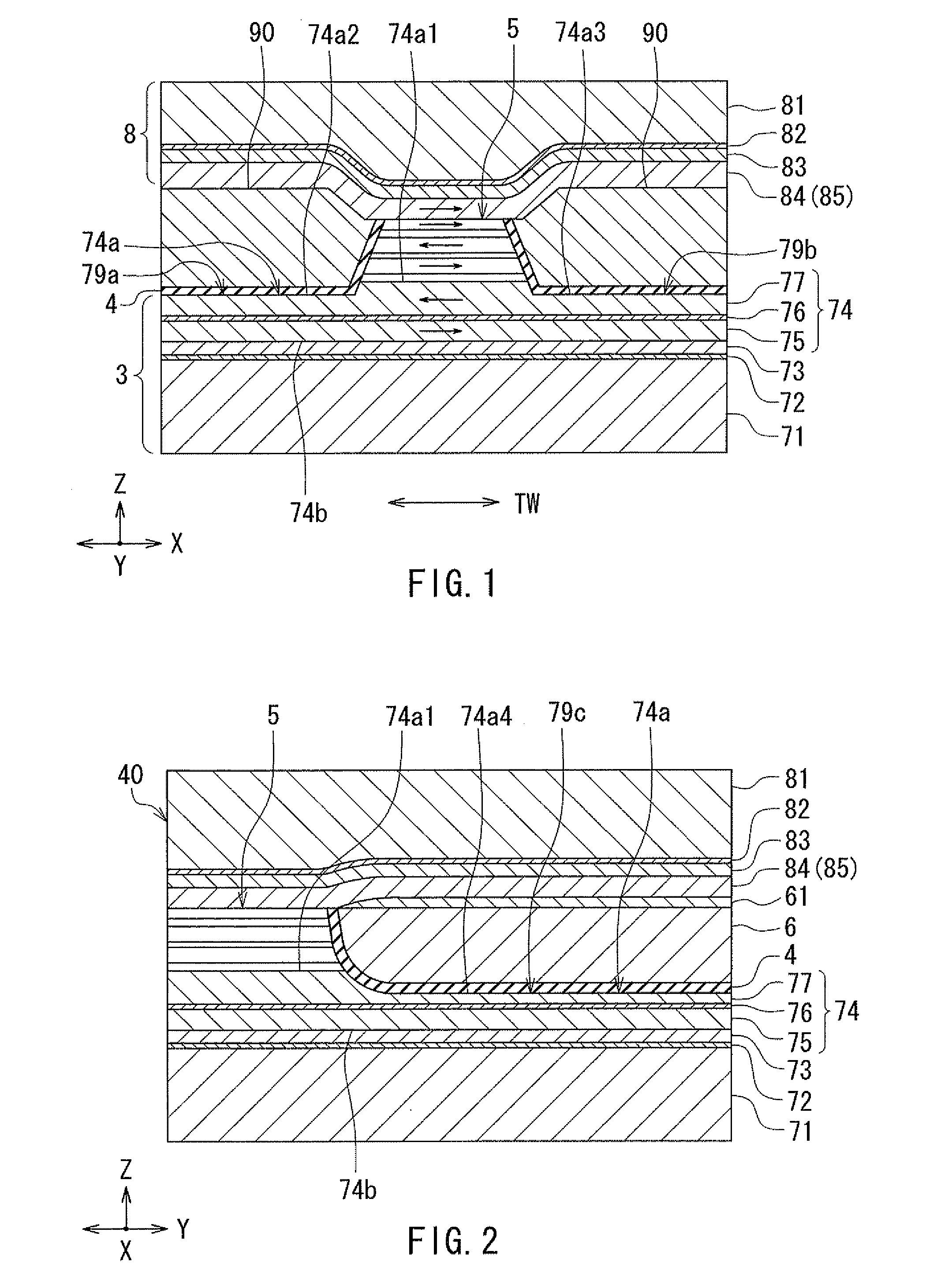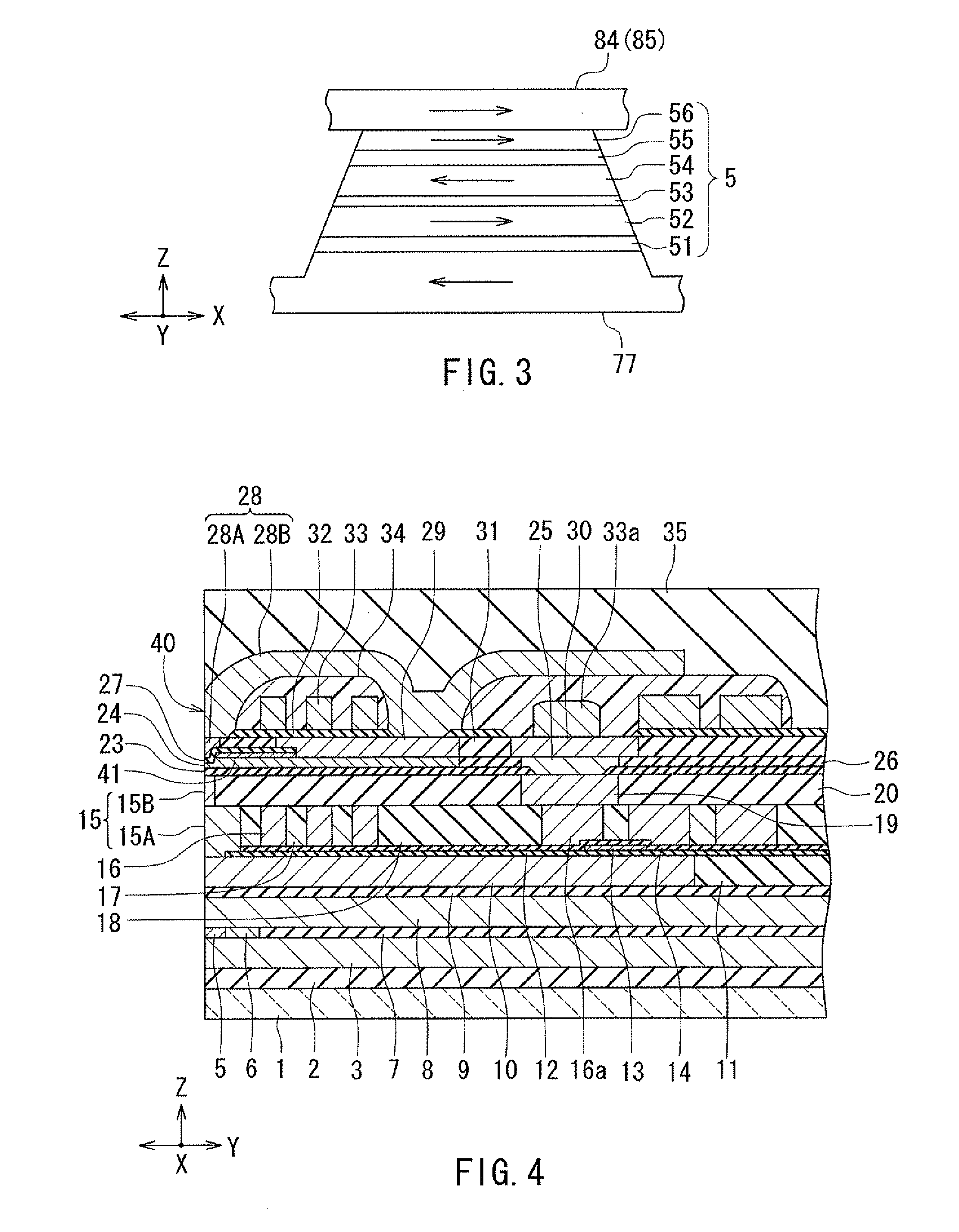Method of manufacturing magnetoresistive element having a pair of free layers
- Summary
- Abstract
- Description
- Claims
- Application Information
AI Technical Summary
Benefits of technology
Problems solved by technology
Method used
Image
Examples
modification example
[0181]A modification example of the method of manufacturing the MR element according to the present embodiment will now be described with reference to FIG. 28 and FIG. 29. FIG. 28 and FIG. 29 each show a cross section of a stack of layers in the process of manufacturing the MR element, the cross section being perpendicular to the medium facing surface 40 and the top surface of the substrate 1. The portions lying below the magnetic layer 77P are omitted in FIG. 28 and FIG. 29. The steps of this modification example are the same as those of the method of manufacturing the MR element shown in FIG. 13 to FIG. 16 up to the step of forming the mask 93.
[0182]FIG. 28 and FIG. 29 show the step after the formation of the mask 93. In this step, the layered film 5P and the protection layer 91 are etched into a predetermined shape by ion milling using ion beams in more than one direction of travel. This step will be described in detail below.
[0183]In this step, like the step shown in FIG. 17, th...
PUM
| Property | Measurement | Unit |
|---|---|---|
| Adhesion strength | aaaaa | aaaaa |
| Electrical conductor | aaaaa | aaaaa |
| Magnetization | aaaaa | aaaaa |
Abstract
Description
Claims
Application Information
 Login to View More
Login to View More - R&D
- Intellectual Property
- Life Sciences
- Materials
- Tech Scout
- Unparalleled Data Quality
- Higher Quality Content
- 60% Fewer Hallucinations
Browse by: Latest US Patents, China's latest patents, Technical Efficacy Thesaurus, Application Domain, Technology Topic, Popular Technical Reports.
© 2025 PatSnap. All rights reserved.Legal|Privacy policy|Modern Slavery Act Transparency Statement|Sitemap|About US| Contact US: help@patsnap.com



